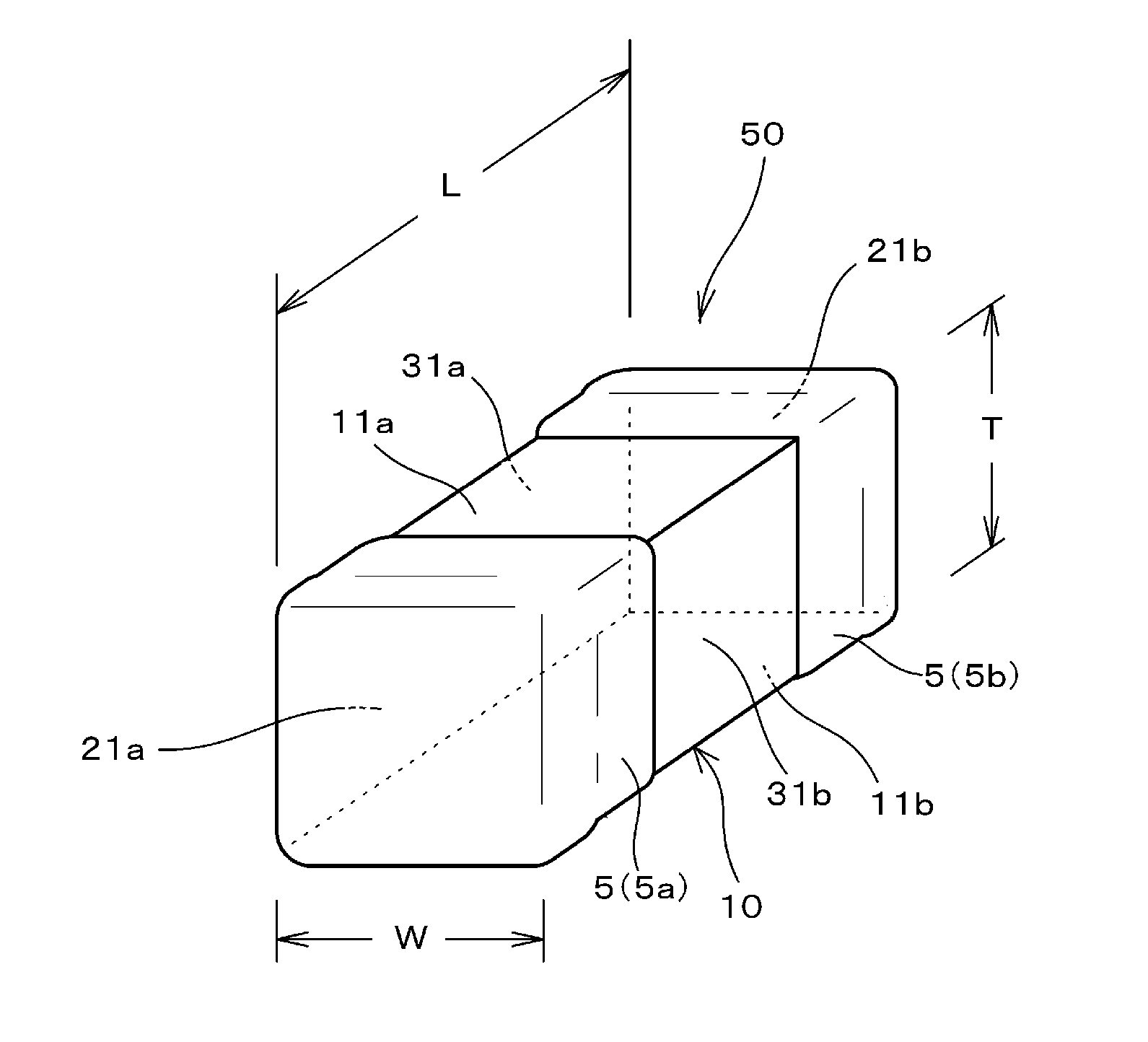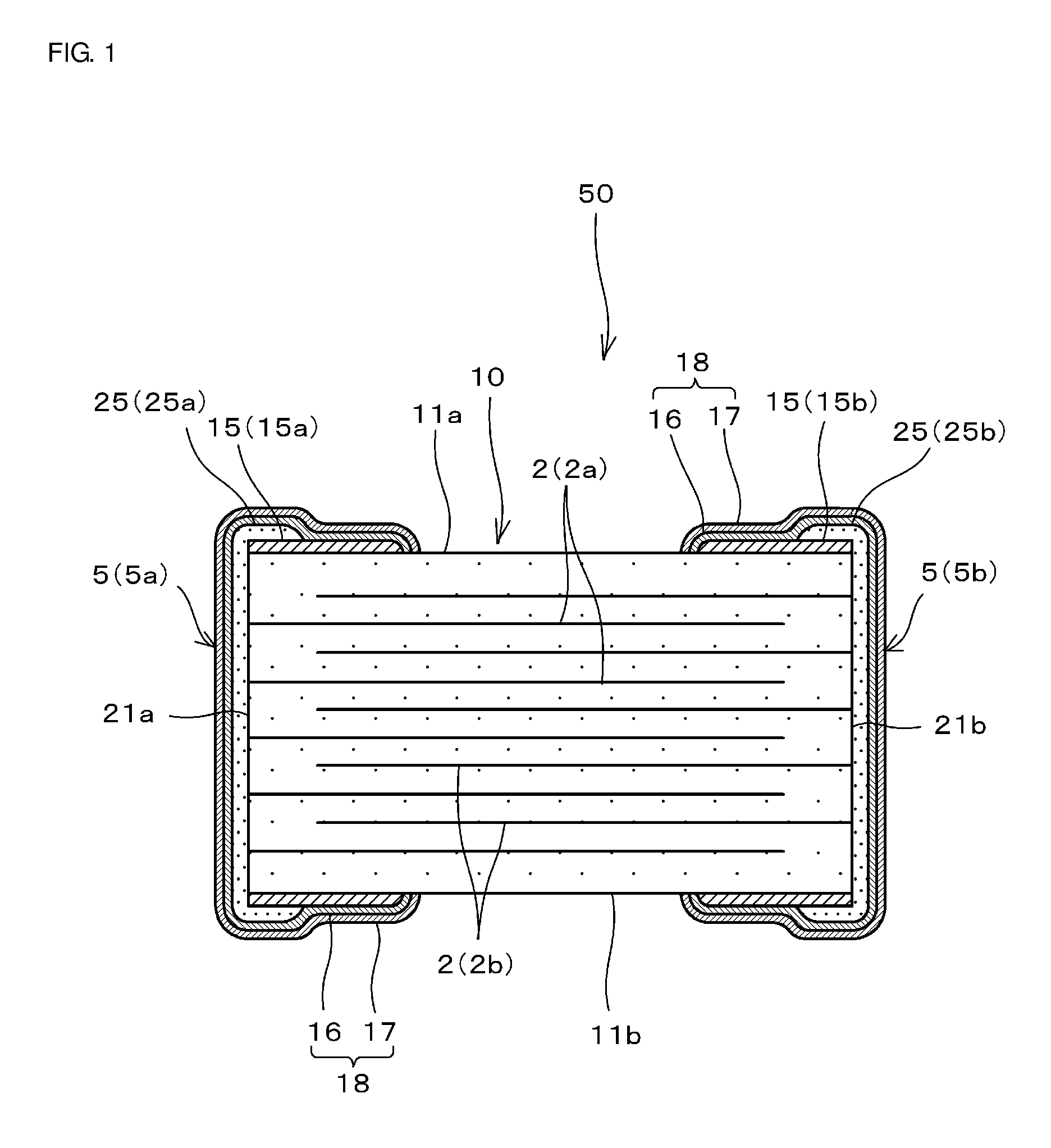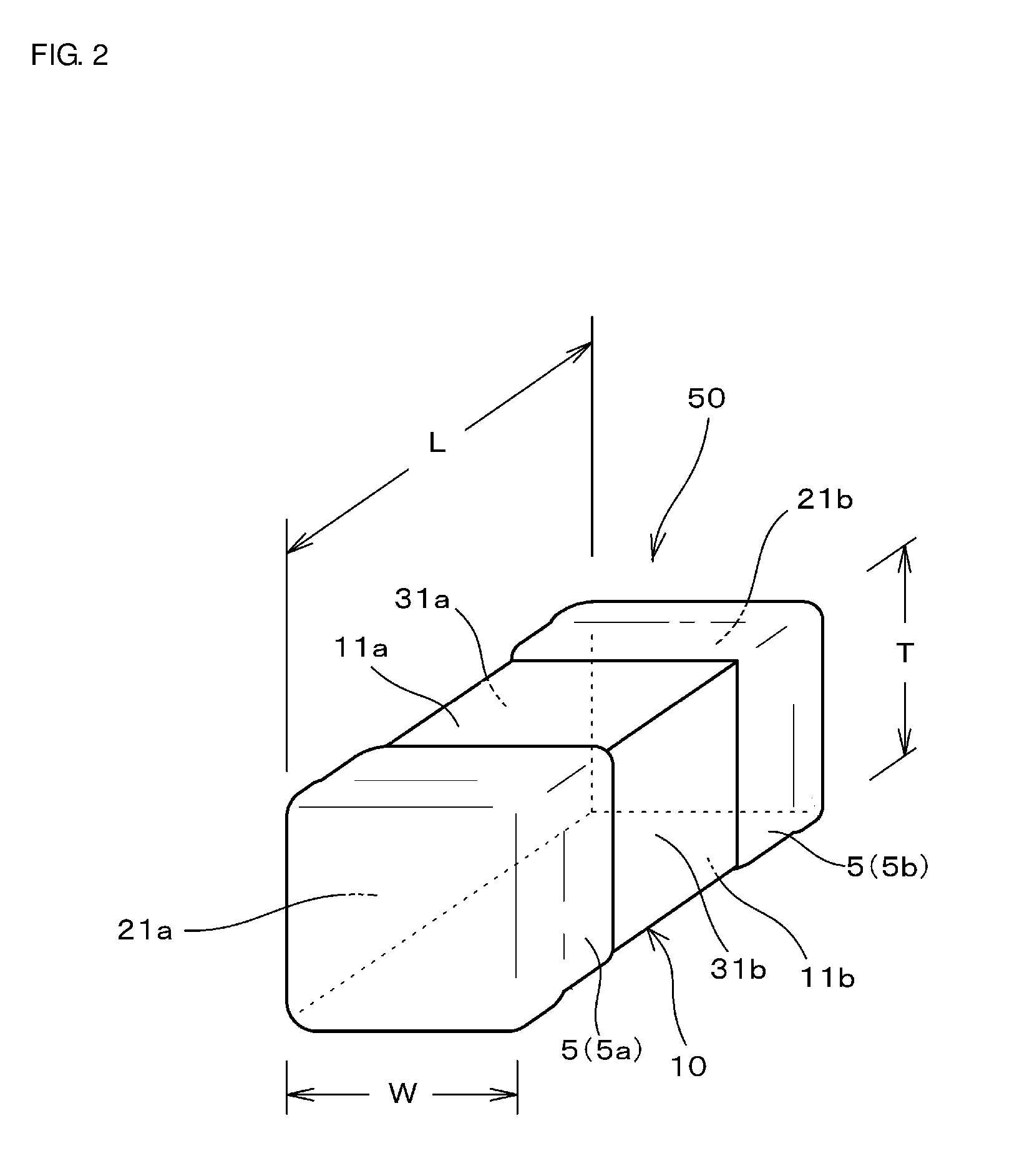Multilayer ceramic capacitor
- Summary
- Abstract
- Description
- Claims
- Application Information
AI Technical Summary
Benefits of technology
Problems solved by technology
Method used
Image
Examples
embodiment 1
Preferred Embodiment 1
[0026]FIG. 1 is a front cross-sectional view showing a structure of a multilayer ceramic capacitor 50 of one preferred embodiment (Preferred Embodiment 1) of the present invention, and FIG. 2 is a perspective view showing the appearance of the multilayer ceramic capacitor 50.
[0027]As shown in FIGS. 1 and 2, the multilayer ceramic capacitor 50 includes a multilayer body (ceramic base body) 10 including a stack of dielectric layers 1 made of a dielectric ceramic material and inner electrodes 2 (first and second inner electrodes 2a and 2b); and a pair of outer electrodes 5 (5a, 5b) disposed on the outer surface of the multilayer body 10 so as to be in electrical communication with the inner electrodes 2 (2a, 2b). The outer electrodes 5 (5a, 5b) each include a plating 18 on the surface thereof. Each plating 18 includes a two-layer structure including a Ni plating 16 and a Sn plating 17.
[0028]The following more specifically describes each element of the multilayer c...
embodiment 2
Preferred Embodiment 2
[0112]In the present preferred embodiment, samples of Examples 2-1, 2-2, 2-3, 2-4 and 2-5 and samples of Comparative Examples 4 and 5 were prepared. In each of these samples, the length D1 (see FIG. 3) in the L direction of a portion of the second outer electrode layer 25 (25a, 25b) which overlies the first outer electrode layer 15 (15a, 15b) is as shown in Table 2. The length in the L direction of the first outer electrode layer 15 (15a, 15b) is defined as E (see FIG. 3).
[0113]These samples were subjected to the humidity loading test and the IR failure rate was determined. The humidity loading test was performed in the same manner under the same conditions as in Preferred Embodiment 1.
[0114]In addition, a thermal shock cycling test was performed in the following manner and cracking rate of Examples and Comparative Examples was determined.
[0115]Before the thermal shock cycling test, first, each sample was soldered to a board under the following conditions.
[0116...
embodiment 3
Preferred Embodiment 3
[0134]Samples of Examples 3-1, 3-2, 3-3, and 3-4 and a sample of Comparative Example 6, in which the diffusion distance D2 differs from sample to sample, were prepared in the same manner as in Preferred Embodiment 1. The diffusion distance D2 is a distance over which Ni of the first outer electrode layer is diffused in a portion of the Cu-containing second outer electrode layer which overlies the first outer electrode layer (see FIGS. 4A and 4B).
[0135]The diffusion distance D2, over which Ni of the first outer electrode layer is diffused in the second outer electrode layer containing Cu, was changed by changing the baking temperature of the second outer electrode layer within the range of about 300° C. to about 700° C., for example.
[0136]FIG. 4A is a cross-sectional view schematically showing structures of the first and second outer electrode layers 15 and 25 of a multilayer ceramic capacitor of Preferred Embodiment 3, and FIG. 4B is an enlarged view of area A ...
PUM
| Property | Measurement | Unit |
|---|---|---|
| Fraction | aaaaa | aaaaa |
| Fraction | aaaaa | aaaaa |
| Fraction | aaaaa | aaaaa |
Abstract
Description
Claims
Application Information
 Login to View More
Login to View More - R&D
- Intellectual Property
- Life Sciences
- Materials
- Tech Scout
- Unparalleled Data Quality
- Higher Quality Content
- 60% Fewer Hallucinations
Browse by: Latest US Patents, China's latest patents, Technical Efficacy Thesaurus, Application Domain, Technology Topic, Popular Technical Reports.
© 2025 PatSnap. All rights reserved.Legal|Privacy policy|Modern Slavery Act Transparency Statement|Sitemap|About US| Contact US: help@patsnap.com



